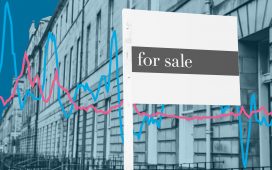
Recent signs that inflation is easing have paved the way for the Federal Reserve to start lowering interest rates as soon as this fall.
The consumer price index, a key inflation gauge, dipped in June for the first time in more than four years, the Labor Department reported last week.
“With abundant signs of a cooling economy, the consumer price index for June certainly constitutes the ‘more good data’ on inflation that Fed Chair Jerome Powell has said we need to see before the Fed can begin cutting interest rates,” said Greg McBride, chief financial analyst at Bankrate.com.
With a fall rate cut looking more likely now, households may finally get some relief from the sky-high borrowing costs that followed the most recent series of interest rate hikes, which took the Fed’s benchmark rate to the highest level in decades.
More from Personal Finance:
High inflation is largely not Biden’s or Trump’s fault, economists say
Why housing inflation is still stubbornly high
More Americans are struggling even as inflation cools
Fed officials signaled they expect to reduce its benchmark rate once in 2024 and four additional times in 2025.
The federal funds rate, which is set by the U.S. central bank, is the interest rate at which banks borrow and lend to one another overnight. Although that’s not the rate consumers pay, the Fed’s moves still affect the rates they see every day on things such as private student loans and credit cards.
“If you are a consumer, now is the time to say, what does my spending look like? Where would my money grow the most and what options do I have?” said Leslie Tayne, an attorney specializing in debt relief at Tayne Law in New York and author of “Life & Debt.”
Here are three key strategies to consider:
1. Watch your variable-rate debt
With a rate cut, the prime rate lowers, too, and the interest rates on variable-rate debt — such as credit cards, adjustable-rate mortgages and some private student loans — are likely to follow, reducing your monthly payments.
For example, credit card holders could see a reduction in their annual percentage yield, or APR, within a billing cycle or two. But even then, APRs will only ease off extremely high levels.
Rather than wait for a small adjustment in the months ahead, borrowers could switch now to a zero-interest balance transfer credit card or consolidate and pay off high-interest credit cards with a personal loan, Tayne said.
Olga Rolenko | Moment | Getty Images
Many homeowners with ARMs, which are pegged to a variety of indexes such as the prime rate, Libor or the 11th District Cost of Funds, may see their interest rate go down as well — although not immediately as ARMs generally reset just once a year.
In the meantime, there are fewer options to provide homeowners with extra breathing room. “Your better move may be waiting to refinance,” McBride said.
Private student loans also tend to have a variable rate tied to the prime, Treasury bill or another rate index, which means once the Fed starts cutting interest rates, the interest rates on those private student loans will start dropping.
Eventually, borrowers with existing variable-rate private student loans may also be able to refinance into a less expensive fixed-rate loan, according to higher education expert Mark Kantrowitz.
Currently, the fixed rates on a private refinance are as low as 5% and as high as 11%, Kantrowitz said.
2. Lock in savings rates
While borrowing will become less expensive, those lower interest rates will hurt savers.
Since rates on online savings accounts, money market accounts and certificates of deposit are all poised to go down, experts say this is the time to lock in some of the highest returns in decades.
For now, top-yielding online savings accounts and one-year CDs are paying more than 5% — well above the rate of inflation.
The opportunity to earn 5% annually on those cash investments may not last much longer.
Howard Hook
wealth advisor with EKS Associates
“One thing you may want to do is consider investing any idle cash you have into a higher-yielding money market fund,” said certified financial planner Howard Hook, a senior wealth advisor at EKS Associates in Princeton, New Jersey.
“Money market brokerage accounts usually pay higher rates than money market or savings accounts at banks,” he said in an emailed statement. “If the Fed is indeed looking to reduce rates five times over the next eighteen months (as currently projected), then the opportunity to earn 5% annually on those cash investments may not last much longer.”
3. Put off large purchases
If you’re planning a major purchase, like a home or car, then it may pay to wait, since lower interest rates could reduce the cost of financing down the road.
“Timing your purchase to coincide with lower rates can save money over the life of the loan,” Tayne said.
Although mortgage rates are fixed and tied to Treasury yields and the economy, they’ve already started to come down from recent highs, largely due to the prospect of a Fed-induced economic slowdown. The average rate for a 30-year, fixed-rate mortgage is now just above 7%, according to Bankrate.
However, lower mortgage rates could also boost homebuying demand, which would push prices higher, McBride said. “If lower mortgage rates lead to a surge in prices, that’s going to offset the affordability benefit for would-be buyers.”
When it comes to auto loans, there’s no question inflation has hit financing costs — and vehicle prices — hard. The average rate on a five-year new car loan is now nearly 8%, according to Bankrate.
But in this case, “the financing is one variable, and it’s frankly one of the smaller variables,” McBride said. For example, a quarter percentage point reduction in rates on a $35,000, five-year loan is $4 a month, he calculated.
In this case, and in many other situations as well, consumers would benefit more from improving their credit scores, which could pave the way to even better loan terms, McBride said.










